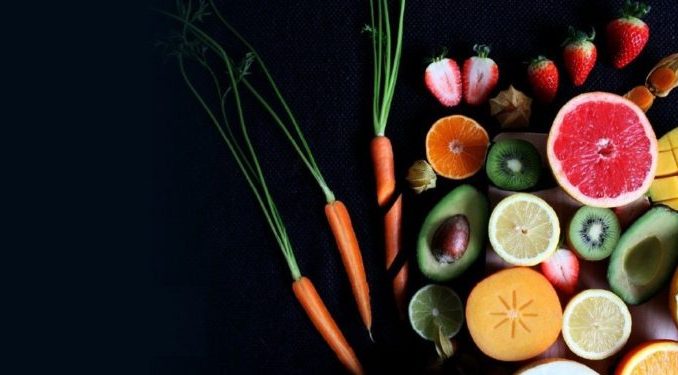

In several traditional and folk medicine practices, blood is often referred to as the body’s life force. Its old perspectives stood the test of time, as modern research reported that blood flow is one of the body’s primary methods of internal communication.
Blood delivers oxygen and significant nutrients to every cell, facilitates the removal of waste products, helps maintain optimal temperature and pH, transports hormones, and ensures a robust, functioning immune system.
At the center of this complex system is where you’ll find the strongest muscle in the body—the heart. Designed for strength, your heart works ceaselessly to pump the blood’s vital messages throughout your body so that every organ is always working at its highest potential.
Recognizing the significance of these processes is the first step to understanding why optimal blood flow is critical for so several aspects of health.
If your aim is to support blood flow, it’s essential to consider the food that winds up on your plate. Specific foods— sometimes referred to as “functional foods”— can support the cardiovascular system in ways that stretch far beyond the nutrients they provide.
This article will examine three nutrient-dense foods that encourage blood flow and improve circulation, plus simple tips for including them in your diet.
Beets
Beets are a hot topic in the food and nutrition world, and it’s no surprise why.
Not only is it packed with significant, but they’re also a rich source of dietary nitrates.
Nitrates found in foods like beets aid the production of a compound called nitric oxide. Nitric oxide is a messenger molecule that explains the muscles in your blood vessels to relax, allowing them to open wider. When your blood vessels are relaxed, blood can flow smoothly and more efficiently.
Also, various researchers have found that the positive impact beets have on nitric oxide production, and blood flow may also contribute to reduced blood pressure and improved athletic performance. Also, Try Tadalista and Sildigra 100 Opinie, both remedies to increase blood circulation in male reproductive organs.
After washing, stripping, and slicing your beets, toss them in add some olive oil and a little salt and pepper. Roast in the oven until fork-tender and work as a stand-alone side dish or roast alongside other root vegetables for a colorful veggie medley. It also pairs beautifully with a drizzle of balsamic vinegar and goat cheese.
For the help of flavor and color, you can include raw, roasted, steamed, or pickled beets to salads and grain bowls or blend them into your morning or pre-workout smoothie.
Leafy Greens
You’ve perhaps heard that eating your greens is good for you and your health, but you may not know that improved blood flow and circulation are among the reasons.
Vegetables, especially leafy greens like beans, collard greens, cabbage, and spinach, among others, are high-nitrate content helps balance the production of nitric oxide in the body. Its nitric oxide is a potent vasodilator that can help enhance blood circulation by dilating the blood vessels. When the blood vessels are dilated sufficiently, it allows the blood to move quickly throughout the body. It lowers the blood pressure on the arteries and improves blood flow, keeping the heart healthy intact.
Like beets, spinach, and other leafy green vegetables— such as Swiss chard and kale— are also chief sources of dietary nitrates and support the body’s natural production of nitric oxide. If you are looking for blood circulation remedies, here try Sildalist or Prejac 60 better solution.
Citrus Fruits
Citrus fruits—like grapefruits, oranges, lemons, and limes—aren’t just juicy and refreshing; they believe to be “natural blood thinners.” It may also help strengthen capillary walls and help prevent plaque build-up, affecting their high vitamin C content, allowing dilation and blood flow. Other foods rich in vitamin C, like Brussels sprouts, strawberries, bell peppers, guava, broccoli, berries, and many more, may also be beneficial.
Berries
Berries include anthocyanins that stimulate the release of nitric oxide. Anthocyanins are flavonoids that act as antioxidants, and they handle the deep shades of berries.
A study found that participants who consumed the highest amount of anthocyanins had an 8% reduction in the risk of building up high blood pressure than those with the lowest anthocyanin consumption. It is because of the vasodilation effects of anthocyanin.
Tip: Eating just one cup of berries per week can positively affect your blood circulation.
How to use them:
Have berries in a breakfast smoothie.
Add some berries to Greek yogurt for a snack.
When you make yourself to cake or ice cream, toss some berries on top.
Dark Chocolates
Chocolates are sometimes associating as predisposing factors to some diseases like diabetes. Still, dark chocolates tell a different story because of their flavonoids, which are naturally found in plants connected with improving blood flow and circulation. Add some chunks once in a while will get your circulatory system going.
Garlic
These flavourful bulbs are another nutrient-high foods that enhance circulation, thanks to their unique phytochemicals (such as allicin) with antioxidant and anti-inflammatory properties. Like citrus fruits, they help by inhibiting plaque from building up and clogging arteries. Garlic has also been linking to lowering blood pressure and cholesterol, which may come back to the ability of garlic phytochemicals to inhibit critical enzymes. It’s not the only food in this part that increases your blood circulation; try onions, leeks, and even radishes are worth keeping in your kitchen.
Watermelon
Watermelons are valuable in lycopene, which is a natural antioxidant associated with increasing circulation. It is a natural pigment that gives certain foods their reddish color. Cooked pink grapefruit, tomatoes, and apricots also include lycopene. Consuming a significant amount of watermelon can also make you hydrated throughout the day and help you feel fresh and active.
Visit for more interesting articles